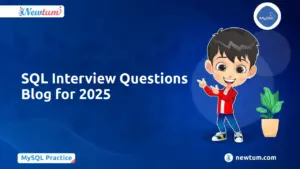Welcome to the world of Java programming! If you’re just beginning your coding journey or simply looking to sharpen your skills, today’s blog will be a valuable guide. We’re diving into a common and useful task: a Java Program to Find the Duplicate Words in a String. This task might sound simple, but it’s an essential skill that combines string manipulation and logical thinking. Whether you’re handling user inputs or processing text data, mastering this program will prove beneficial. Stick around as we break down each step, making complex concepts easy and engaging for you!
Introduction to a Java Program for Finding Duplicate Words in a String
import java.util.HashMap;
import java.util.Set;
public class DuplicateWords {
public static void findDuplicateWords(String input) {
String[] words = input.toLowerCase().split("\s+");
HashMap wordCount = new HashMap<>();
for (String word : words) {
if (wordCount.containsKey(word)) {
wordCount.put(word, wordCount.get(word) + 1);
} else {
wordCount.put(word, 1);
}
}
Set wordsInString = wordCount.keySet();
for (String word : wordsInString) {
if (wordCount.get(word) > 1) {
System.out.println(word + ": " + wordCount.get(word));
}
}
}
public static void main(String[] args) {
String input = "This is a test. This test is only a test.";
findDuplicateWords(input);
}
}
Explanation of the Code
In the Java Program to Find the Duplicate Words in a String, we’re using a `HashMap` to identify and count duplicate words. Here’s how it works:
- The method `findDuplicateWords` receives a string as input. It converts all characters to lowercase to ensure case insensitivity and splits the string into individual words.
- A `HashMap` named `wordCount` is created to store each word and its frequency. As we iterate over each word, the map checks whether the word is already in it.
- If the word is present, the count increases by one. Otherwise, it adds the word with a frequency of one.
Finally, another loop goes through the `HashMap` to find words with a count greater than one. These are the duplicate words, which are printed with their occurrence count. - The `main` method initializes an example sentence and invokes the `findDuplicateWords` function to demonstrate the program’s functionality.
This example helps visualize how Java can be used to manage and count words with ease, making programming accessible and practical!
Also explore our blog on Factorial of a number in python using for loop, here!
Output
this: 2
is: 2
a: 2
test: 3
Real-Life Applications
When learning to code, real-life applications of programming concepts can be incredibly helpful. A Java Program to Find the Duplicate Words in a String isn’t just theoretical; it’s highly applicable in various scenarios. Here are some real-life examples where this program can make life easier:
- Data Cleaning in Text Analytics: In data science, especially when dealing with unstructured data like customer reviews or social media posts, duplicate words can muddy analysis. Identifying these duplicates helps in cleaner, more accurate text analytics by ensuring word counts truly reflect unique expression.
- Improving Content Originality: Bloggers and content writers often rely on software to ensure uniqueness. By detecting duplicate words, authors can refine their drafts, enhancing both readability and originality, ensuring their content stands out without unnecessary repetition.
- Enhancing Search Engine Optimization (SEO): Repeated words in poorly optimized articles can detract from a page’s relevance. Using a Java program that finds duplicates can aid in optimizing content, thus potentially boosting search engine rankings by minimizing redundancy and focusing on keyword strategy.
- Security and Anti-Spam Measures: Another fascinating application is in cybersecurity. Detecting duplicated words can sometimes unveil spambots or unauthorized content manipulation attempts, playing a crucial role in cybersecurity strategies and maintaining data integrity.
Common Interview Questions on Finding Duplicate Words in Java
-
What is the primary purpose of finding duplicate words in a string using Java?
To identify and count occurrences of the same word in a text for analysis or data processing tasks. -
How can you handle case sensitivity while finding duplicate words?
Convert the entire string to either lower case or upper case before processing to ensure uniformity. -
Which Java data structures can help identify duplicate words efficiently?
HashMap or HashSet can be used to efficiently track word occurrences and identify duplicates. -
Why might you need to remove punctuation from the string when finding duplicate words?
Punctuation can attach to words and may interfere with accurately identifying duplicates if not removed. -
What is the benefit of using regular expressions in this Java program?
Regular expressions help in splitting the string accurately by spaces, punctuation, and other delimiters.
Ever struggled with setting up a compiler? Our AI-powered Java online compiler changes the game. Write, run, and test your Java code instantly, making learning or project development a breeze with cutting-edge technology.
Conclusion
In conclusion, finding duplicate words in a string using Java enhances your programming skills and deepens your understanding of string manipulation. Through methods such as splitting strings, using hash maps, and employing loops, you can efficiently identify repeated words. This skill improves coding proficiency and problem-solving abilities, which are crucial for any programmer. For more insights and tutorials, consider exploring resources like Newtum. Keep practicing to enhance your coding journey. Engage with coding communities, ask questions, and share your progress. Curious to learn more? Dive into your next challenge and discover more coding wonders!
Edited and Compiled by
This blog was compiled and edited by Rasika Deshpande, who has over 4 years of experience in content creation. She’s passionate about helping beginners understand technical topics in a more interactive way.



